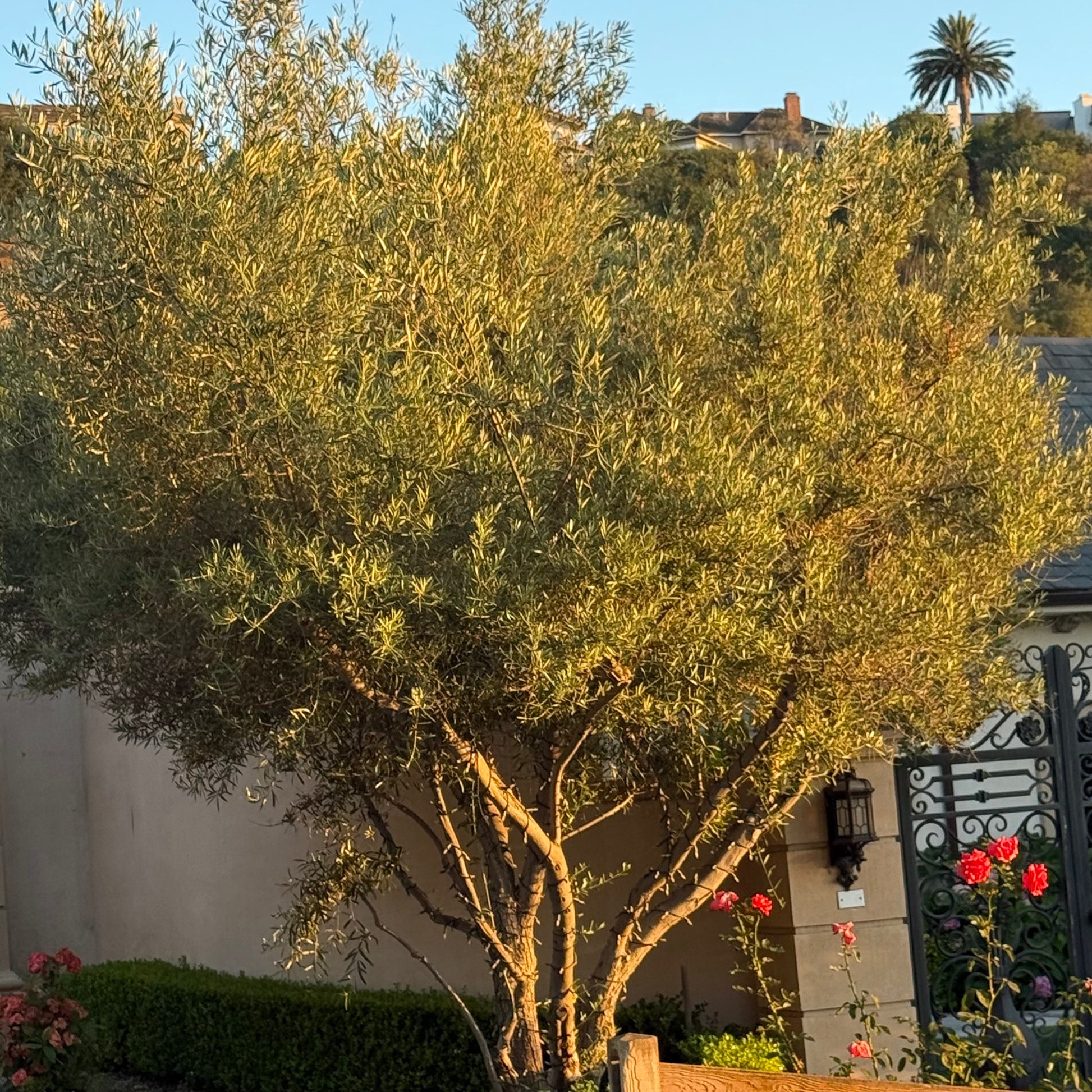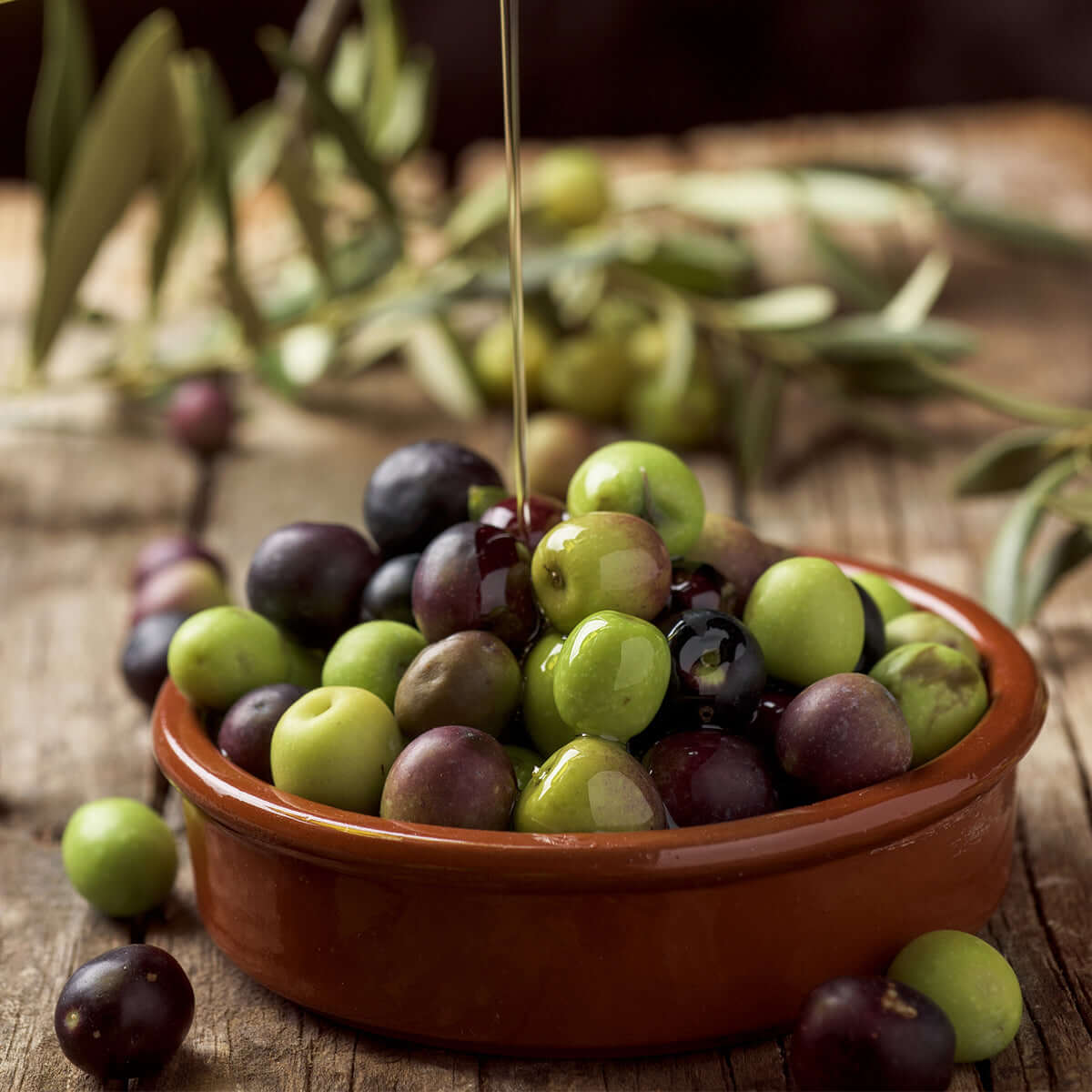
Arbequina Olive Tree
Olea europaea 'Arbequina'
Delivery
24-hour money-back guarantee
Free delivery on orders over $349
Big Project? Call 888-444-1126 for bulk rates!
The Arbequina olive tree produces edible olives loaded with antioxidants and valued for its tasty olive oil. The small fruit of the Olea ‘Arbequina’ yields an olive oil that is sweet, delicate, fruity, and aromatic. Grown primarily for its olive oil production, the Arbequina olive tree is a beautiful addition to any garden or landscape.
Olea europaea 'Arbequina' is a self-fruitful, very productive variety that does not require pollination from another olive variety. However, adding another variety will result in more fruits. The small green fruits ripen to dark purple or with shades of brown and are ready for harvest in autumn in California.
Considered a compact tree at 20 ft. tall when planted in the ground at maturity, Arbequina is a slow-growing, highly adaptable fruiting olive tree with attractive silvery-green leaves that can be pruned to a desired size or shape. Suitable for topiary or containers and easy to grow, Arbequina thrives in heat, is drought-tolerant, and is cold hardy to 12℉. Arbequina also grows in coastal regions. The narrow grey-green foliage, thick and leathery with silvery undersides, contrasts beautifully with the matured, gnarled, dark trunk.
Known for their longevity and resilience, olive trees are not only symbols of peace, wisdom, and prosperity but also magnificent evergreen trees. Their picturesque appearance enhances any landscape, whether in groves or as a single specimen.
Enjoy the benefits of making your own olive oil with Olea europaea 'Arbequina’. This popular fruiting olive tree has mild, fruity olives and makes a beautiful addition to any garden, combining functionality and aesthetics seamlessly.
Comparing fruiting olive trees at a glance:
‘Arbequina’ is grown for olive oil production and is considered a compact olive tree.
‘Manzanillo’ is grown for fruit consumption and is considered a table olive, producing both green and black edible olives.
‘Mission’ is a dual-purpose olive that can be grown for eating or for olive oil production.
How big does an Arbequina Olive Tree grow?
When does the Arbequina Olive Tree produce fruit?
Is the Arbequina Olive Tree self-pollinating?
How much sunlight does the Arbequina Olive Tree need?
Olive
15-30 ft.
15-25 ft.
Low
Perfect Your Landscape With Expert Help
Customize your yard with confidence. Schedule your free consultation today and bring your outdoor space to life!

